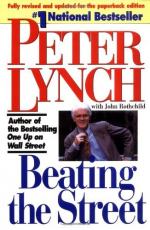|
This section contains 549 words (approx. 2 pages at 400 words per page) |

|
Chapter 9 Summary and Analysis
Investors are often rewarded by looking to industries other investors fear. In 1992, for example, there was no more feared an industry than residential real estate. Investors feared that the collapse in the commercial real estate market would spread to residential real estate.
Lynch noticed that despite analysts' concerns, the median house price steadily rose from 1989 through 1991. Since the statistic was tracked in 1968, the median home price had gone up every single year. Lynch calls this a "quiet fact." Other quiet facts for the housing market are the "affordability index" and the percentage of mortgage loans in default. Even though these facts pointed in a positive direction, companies even remotely related to the home building and home finance industries were way down.
Anticipating a boom in the housing market, Lynch looked for housing-related companies that might benefit. He thought about Pier 1, the...
(read more from the Chapter 9 Summary)
|
This section contains 549 words (approx. 2 pages at 400 words per page) |

|




